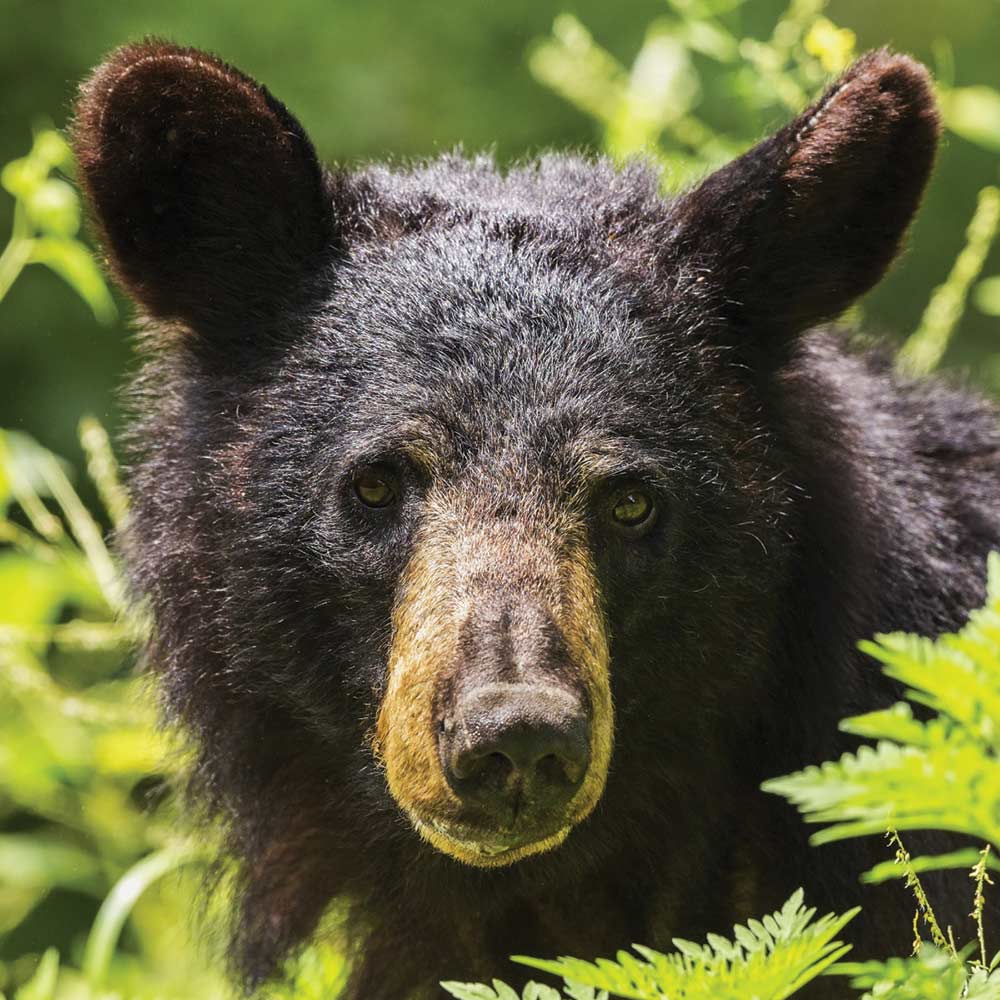Bears, Oh My! – American Black Bears
The Great Outdoors | September 1, 2022

By Jackie Scharfenberg, Forest Naturalist, Wisconsin Department of Natural Resources
As fall approaches, we American black bears (Ursus americanus) experience hyperphagia – the need to eat almost fulltime.
That allows us to put on enough weight to get through our long winter sleep. We lose about 30 percent of our body weight during those four to six months of slumber. That would be about 90 pounds for a 300-pound male bear. During dormancy, our heart rate and body temperature drops; we eat nothing and do not urinate or defecate. After we wake up in spring, it takes us a couple of weeks to get everything back working properly.
Our Young
We are not true hibernators since we will stir from our dens on warm winter days. Our females give birth in January during their winter sleep. The little tikes weigh only seven to twelve ounces and come into the world with their eyes closed and a thin coat of fur. During the summer, a mother bear will leave her cubs for up to 15 hours while she feeds. Cubs stay with their moms through a second winter before she sends them out to survive on their own.
Our Diet
Even though we belong to the order carnivora, we are true omnivores. Up to 85 percent of our diet consists of plant material including all kinds of berries, nuts, seeds, and crops. We also devour small mammals, newborn fawns, lots of insects, carrion (dead animals), and sometimes people’s garbage. Using our long, curved claws, we tear into rotten logs or dig to find all kinds of invertebrates to munch.
Our Presence
Our Wisconsin population has grown from 5,700 in 1985 to more than 28,000 today. You will find most black bears in the northern two-thirds of the state, but, some adventurous bears have moved further south and a few have even wandered into southeast Wisconsin.
Avoiding Trouble
Being fairly shy, we prefer to spend most of our time alone. With our good eyesight, hearing, and exceptional sense of smell (seven times better than a dog’s), we usually evade a run in with humans and other potential predators. To get away we use our strong legs and claws to climb trees. We can also sprint up to 30 miles per hour, or swim to safety.
If you want to avoid a run in with a bear, keep your yard and campsite clean of food. Put garbage cans inside a building, take down birdfeeders at night, cover your compost bin, and put away your grill. Remember, we are most active at night.
Never approach a bear without warning. We are rarely aggressive, but we will defend our young and a good food source. When hiking make noise, to announce your presence. If a bear starts to attack, shout and raise your arms above your head to make yourself look bigger. Make sure there is an escape route for the bear. Do NOT run, but back away slowly without turning your back on the bear. If you run, we will think you’re prey to hunt down. If you follow these few rules, we can co-exist in the forests of Wisconsin.



